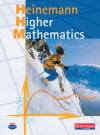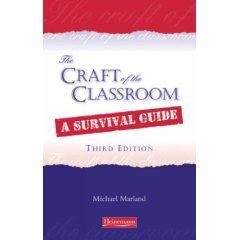 Here it is, folks!
Here it is, folks!First up, let me reassure you that I am in no way connected with the publication of this tome, just in case you suspect this is a puff piece. But by heck, if I was, I'd be pretty proud.
The book in question is "Heinemann Higher Maths, a textbook published by, er, go on, guess. (Since when did we decide the publisher's name should be part of the title, eh? Let's hope it doesn't catch on... Penguin 1984, anyone?) It's designed to be used for Higher Mathematics, one of those Scottish qualifications which so baffles anyone south of the border, and in particular with the relatively newly redesigned, "unitised" Higher (don't ask). The authors are a team of Scottish teachers who have done a good job, on the whole.
Complaints? Well, some of the maths is dodgy - eg talking of a function y=3x+2 (say) when they should call it a function f(x), then define y=f(x) if they really want to. But that's forgivable, if a sign of the times. No, what's a real bummer is that the answers at the back are notoriously unreliable. To be fair, Heinemann fessed up to this and published an errata, as well as updated newer printings... however, this seemed to throw up wrong answers elsewhere. So, if you're using the book (and it's the one I would choose above any other for the Higher right now), be aware that the solutions sometimes aren't (solutions, that is).
But hey, I come to praise the book! So on the plus side... well, it has investigative approaches, particularly to the earlier parts of chapters (hoorah!), which most teachers miss out (boo!); it includes questions from actual Higher exam papers (always a hit with the kids); it has a lot of content, with more questions than anyone could really use (ideal for differentiation within a class, aka keeping the clever ones quiet); it has very useful revision chapters for each of the three units; in short, it's firm, meaty nourishment. And, whisper it quietly, a gazillion times better than the "other" textbook, which I shall mention not.
It makes teaching a whole lot easier when you have a textbook on which you can base a course, and one that you don't feel you have to fight against. Take a bow, HHM, for a job well done.
Having said that, the vectors chapter is pants.


